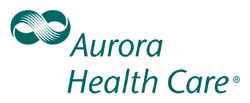Addressing increased illicit drug use in the workplace By Gregory Raethke
By Gregory Raethke
The newest Quest Diagnostics Drug Testing Index
1 shows that cocaine, marijuana and methamphetamine use is up broadly among the American workforce. This index, which has followed these trends for the past 25 years, showed significant increases in drug positivity for the most common illicit drugs across almost all drug testing specimen types and in all testing populations.
Here are key findings taken from the Quest study that should have employers taking notice:
- Overall positivity in urine drug testing among the combined U.S. workforce in 2016 was 4.2 percent, a five percent relative increase over last year’s rate of 4.0 percent. This was the highest annual positivity rate since 2004 (4.5 percent).
- Cocaine, marijuana and methamphetamine use is up broadly among the U.S. workforce, across multiple drug test specimen types and testing populations.
- Cocaine positivity increased 12 percent in 2016, reaching a seven-year high of 0.28 percent.
- The positivity rate for cocaine in post-accident urine drug tests was more than twice that of pre-employment urine drug tests in both federally mandated, safety-sensitive populations and the general U.S. workforce.
- In Colorado and Washington, the overall urine positivity rate for marijuana outpaced the national average in 2016 for the first time since the recreational statutes on marijuana took effect in those States.
- Year over year, marijuana positivity increased nearly 75 percent in oral fluid testing. In addition, positivity increased in both urine and hair testing in the general U.S. workforce.
- Between 2012 and 2016, methamphetamine positivity climbed 64 percent in the general U.S. workforce and 14 percent among federally mandated, safety-sensitive workers.
This information sheds new light on the extent of the on-going threat to workplace safety posed by substance abuse. Commenting on these statistics, a representative from the Institute for a Drug-Free Workplace, said, “While the national dialogue swirls around marijuana and opiate issues, we find cocaine — a substance with well-established danger — continuing its troubling upswing, not just in the general workforce, but also in safety-sensitive jobs with federally-mandated testing.”
It’s clear that everyone involved in any type of business — both employers and employees — suffers when there is workplace substance abuse. Employee drug use is costly to business in terms of increased turnover, absenteeism, workplace accidents and workers’ compensation costs. Some costs are quite obvious, while others, such as low morale or lost productivity are less obvious, but the effects are all detrimental to a company’s bottom line.
According to new data released by the National Safety Council
2, substance use disorders affect about 20.8 million Americans or nearly eight percent of the adult and adolescent population. About 75 percent of those people are part of our country’s workforce. The estimated yearly economic impact is more than $442 billion dollars — with employers absorbing a significant portion of these costs.
Employers who remain committed to creating a safe, drug-free work environment should be keenly aware of the increased potential for drug use among their employees. Workplace drug testing can help promote a safe, healthy and productive environment for everyone. There is no reliable substitute for ongoing vigilance to minimize the impact of substance abuse in the workplace.
Low-cost drug testing can significantly impact an employer’s health care costs by deterring and detecting drug use in employees. Workplace drug testing can also provide objective, concrete evidence to initiate an intervention for referral to treatment and/or disciplinary action.
The Occupational Health Department at Aurora Health Care is available to provide drug-testing expertise and offer specific screenings to meet the needs of any organization. Aurora can help design appropriate screening programs to ensure a drug-free workplace, including:
• pre-placement testing;
• reasonable cause testing; and
• post-accident and random drug testing (post-accident testing is also available at some of Aurora’s hospital emergency departments).
Aurora’s well-respected Employee Assistance Program (EAP) can also assist employers looking to proactively address the impact of substance abuse in the workplace. Aurora’s EAP has worked with businesses of all sizes throughout North America since 1983.
Gregory Raethke is director of Aurora Occupational Health Services. For more information, please visit AuroraEmployerSolutions.org
Sources
1. Jupe, N. (2017, May 16). Increases in Illicit Drugs, Including Cocaine, Drive Workforce Drug Positivity to Highest Rate in 12 Years.
Quest Diagnostics.
2. Beller, S. (2017, May 9). Employers Paying the Price of Substance Abuse. Quest Diagnostics.
Teaser:
Employers who are committed to creating a safe, drug-free work environment should be keenly aware of the increased potential for drug use among their employees. Do you know that illicit drug use, including cocaine, marijuana, and methamphetamine use is up broadly among the American workforce? Newly released data shows increased rates of drug positivity for the most common illicit drugs — across virtually all drug test specimen types and in all testing populations.
Read more here.
